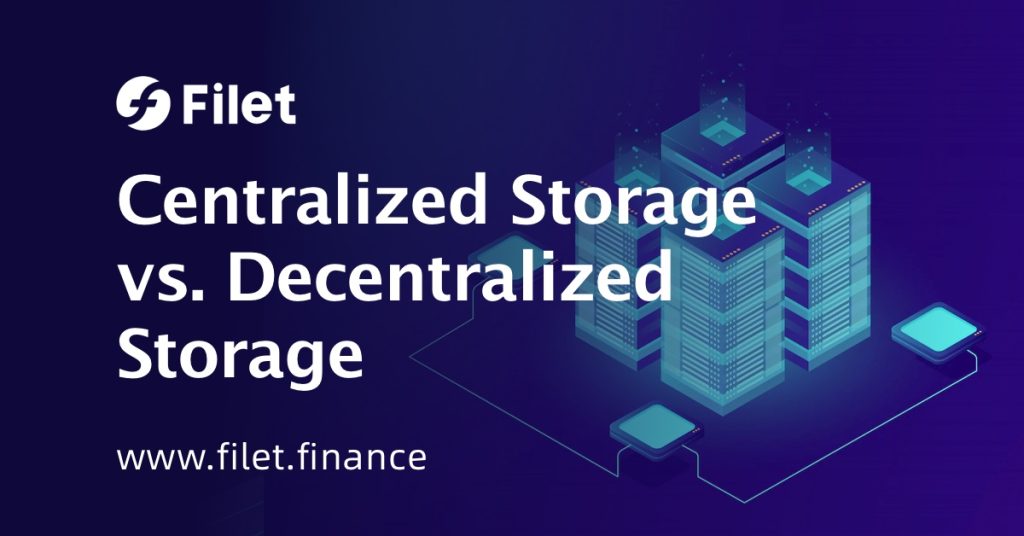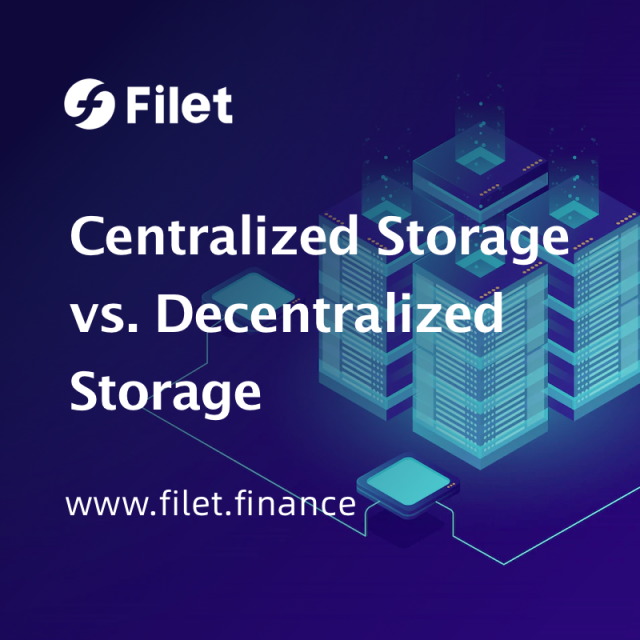
For obvious reasons, one of the hottest use-cases of blockchain technology is decentralized storage. With a few big tech companies controlling all the data, Facebook being the center of the biggest data leak scandal, and data breaches becoming common, it makes sense that the world wants to move to a better solution. Not to mention, the costs of centralized cloud storage are getting too high, making it inaccessible to the masses.
The internet, too, is changing. For instance, from the early days of storage, where file-sharing was essential, we have progressed to owning and maintaining our own server, and then came the “pay-as-you-use” model of Web 2.0.
But this current iteration of the internet has its shortcomings in the form of censorship, giving control of data to a third party, and data mismanagement. Now, we are further evolving to Web 3.0, which requires a decentralized distribution system.
While you pay as you use, much like conventional cloud computing here, instead of all the data being stored in a centralized server, it is stored inside the different nodes of a peer-to-peer (P2P) network.
The ultimate goal of Web 3.0 is to provide internet service which is open, permissionless, decentralized, censorship-resistant, and user-centric.
Centralized Storage v.s. Decentralized Storage
Unlike centralized models, decentralized storage doesn’t require the user to give up control over their content. Moreover, by breaking the users’ files into chunks and distributing them across multiple nodes, data is scattered across multiple nodes, and there is no single point of failure. So, even if one of the nodes goes down, the rest of the network will continue as other nodes pick up the slack.
Employee wages, management burdens, data center rents, accounting costs, legal fees, etc., fuel the high cost of centralized storage. These costs also continue to increase, making centralized cloud services expensive gradually. The cost of migrating data between different centralized storage platforms is also high.
In addition, being concentrated in one or several locations poses the risk of security, while using third parties to host the data makes centralized storage prone to privacy leaks.
In contrast, decentralized cloud storage takes advantage of existing and unused storage and bandwidth. As such, it costs a fraction of centralized cloud storage. Not only is there no overhead in decentralized storage, but the data is also already at the edge. There are no hidden fees or need for upfront investment in data centers either, and there’s healthy competition in the market — all of which keeps costs low.
Prominent Projects
Some of the popular examples of decentralized storage include Filecoin. The decentralized data storage marketplace is built on The InterPlanetary File System (IPFS), a peer-to-peer (P2P) hypermedia protocol designed for scalability, load balancing, caching, deduplication, and high availability. Instead of using location-based addressing like HTTP, IPFS uses content-based addressing so that content can be verified.
Storj is another decentralized storage project. Built on Ethereum, it allows you to store data in a secure and decentralized manner by using encryption, sharding, and a blockchain-based hash table.
Siacoin is a blockchain-based cloud platform where peers rent hard drive space from one another rather than renting it from a centralized provider, which helps in reducing the overall cost drastically.
AWS, Google Cloud Platform (GCP), and Microsoft Azure are some popular examples of centralized storage solutions.
Conclusion
No doubt centralized storage has its advantages of ease and speed. Still, decentralized storage is slowly becoming critical thanks to cost-efficiency, censorship resistance, better experience, data ownership, and better security and privacy. But it is still in its nascent stage, and only with mainstream acceptance and usage will decentralized storage gain mass adoption and boost storage to the next level.
Contact Filet
Webiste: www.filet.finance
Telegram: https://t.me/filet_finance
Twitter: https://twitter.com/Filet_finance
Blog: https://www.filet.finance/blog_en/
Medium: https://filet.medium.com/
Email: contact@filet.finance
